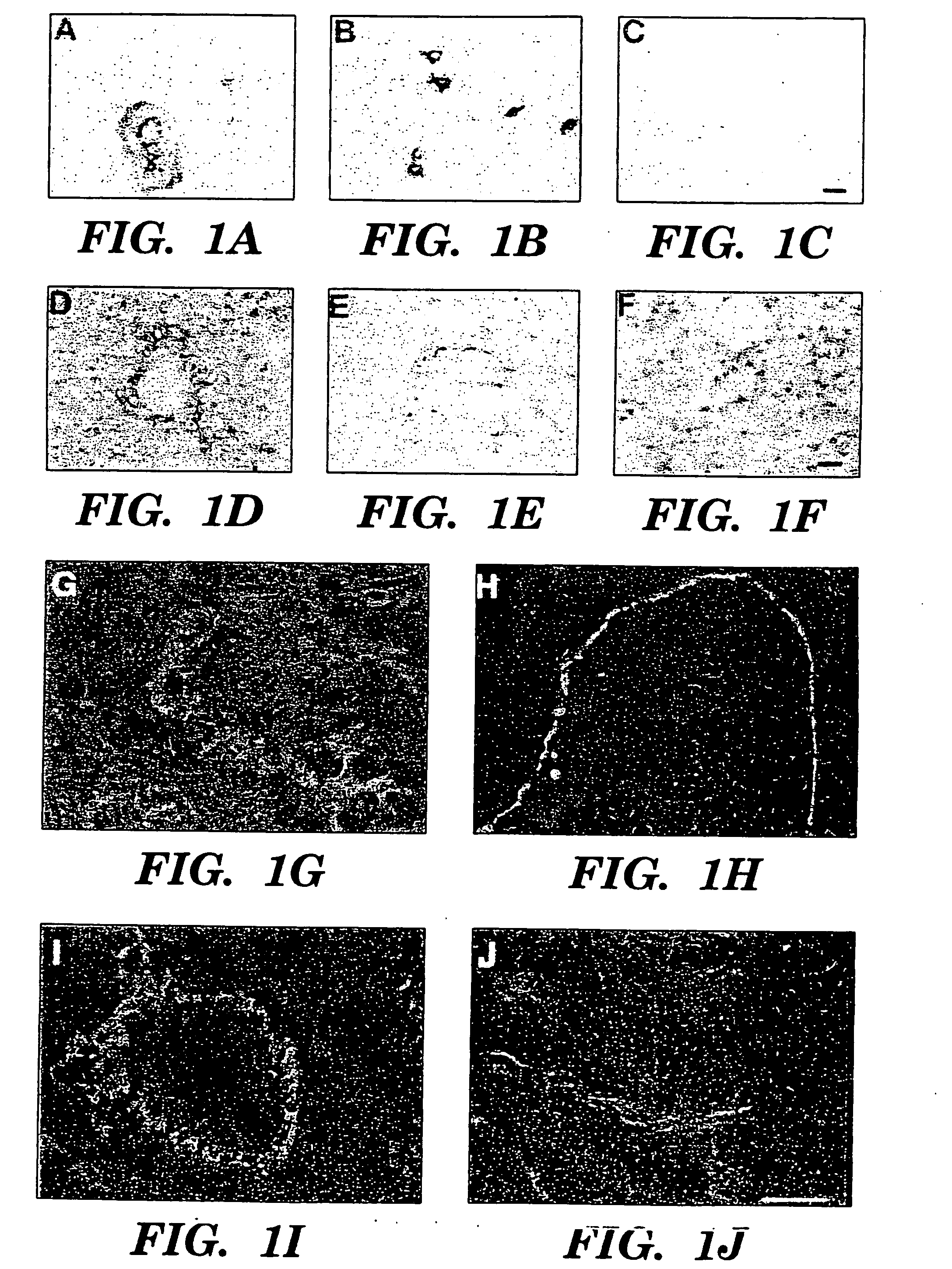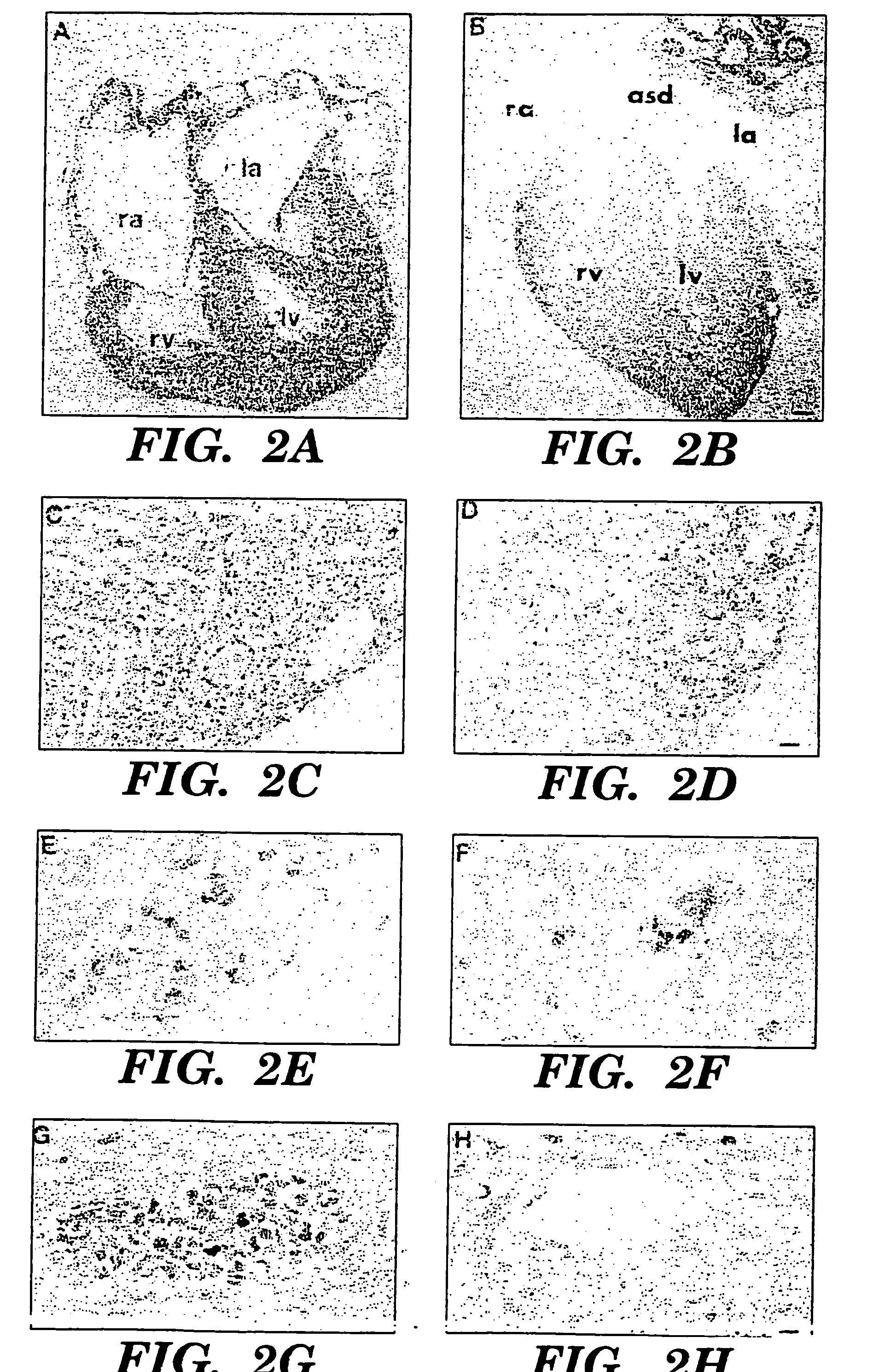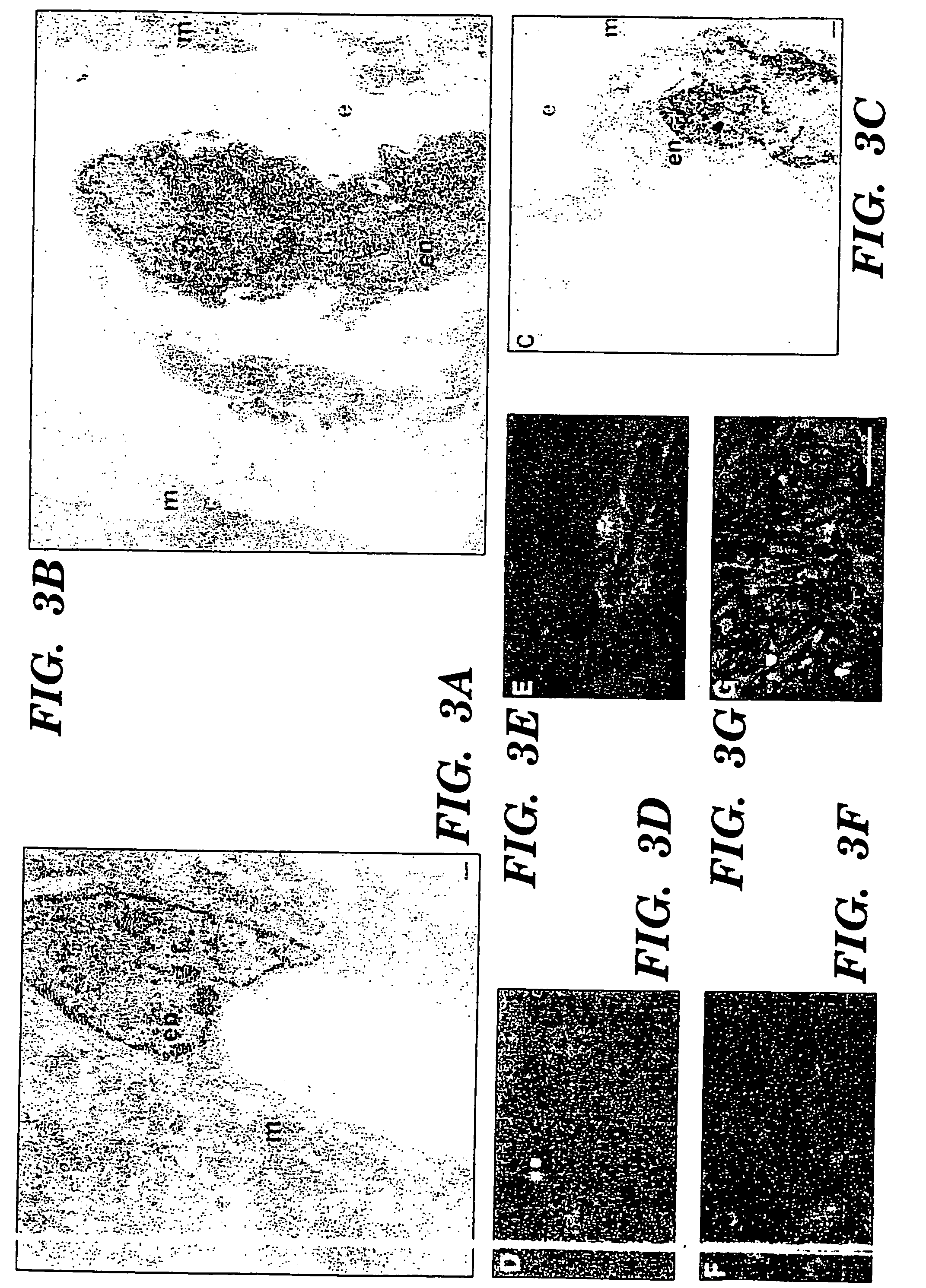Methods for regulating angiogenesis and vascular integrity using trk receptor ligands
a technology of trk receptor and vascular integrity, which is applied in the direction of angiogenin, drug composition, cardiovascular disorder, etc., can solve the problems of minor cellular deficit, unassessed biological actions of bdnf and related neurotrophins in cardiovascular function and development, and achieve enhanced vessel fragility, increased capillary network, and prevent endothelial cell apoptosis
- Summary
- Abstract
- Description
- Claims
- Application Information
AI Technical Summary
Benefits of technology
Problems solved by technology
Method used
Image
Examples
example 1
BDNF Mutant Mice
[0079] Heterozygous (±) BDNF mice (Ernfors et al., “Mice Lacking Brain-Derived Neurotrophic Factor Develop with Sensory Defects,”Nature,368:147-150 (1994), which is hereby incorporated by reference), (STOCK BDNFtmlJae and C5713L / 6J backcrossed BDNFtmlJae) were obtained from Jackson Laboratories (Bar Harbor, Me.), and were intercrossed by brother / sister matings for embryo analysis. The morning of the detection of a vaginal plug was considered day 0.5, and the gestational age was assigned. At the time of embryo harvest, morphologic criteria were used in assigning developmental age. Key criteria included limb bud, eye and ear development, crown-rump length and weight (Kaufman, “The Atlas of Mouse Development,”Academic Press, Inc. San Diego (1992), which is hereby incorporated by reference). The genotype of each embryo or newborn mouse was determined by analysis of head derived DNA using PCR amplification with primer sequences as described in Ernfors et al., “Mice Lacki...
example 2
Immunohistochemical Analysis
[0081] Monoclonal antisera specific for α-actinin 1E12 (undiluted monoclonal supernatant) was utilized for detection of vascular smooth muscle cells. Biotinylated PECAM-1 antibody specific for CD 31 (1:100 dilution, clone MEC 13.3, Pharmingen, San Diego, Calif.) was used to detect endothelial cells and dc101 monoclonal antisera (Imclone, New York, N.Y.) was used to detect flk-1. Polyclonal antisera specific for BDNF, NT-3, NT-4 (sc-546, sc-547, sc-545 respectively, 1:50-1:500 dilution, Santa Cruz Immunochemicals, Santa Cruz, Calif.) or kinase active trk B (sc-12-G, 1:100 dilution, Santa Cruz Immunochemicals, Santa Cruz, Calif.) were used on tissues which had been snap frozen over liquid nitrogen vapor and sectioned on a cryostat. The specificity of neurotrophin antisera has been previously confirmed by the absence of staining of neural tissues from the appropriate gene targeted mice. In addition, preincubation of polyclonal antisera with the immunizing p...
example 3
Generation of NesPIXpBDNF Mice
[0082] The generation of transgenic mice has been described earlier (Ringstedt et al., “BDNF Regulates Reelin Expression and Cajal-Retzius Cell Development on the Cerebral Cortex,”Neuron 21:299-310 (1998), which is hereby incorporated by reference). Briefly, the Nes PIX-pBDNF construct consisted of a region extending 5.8 kb upstream from the initiation codon of the mouse nestin gene followed by a 1 kb fragment from the fifth exon of the mouse gene containing the complete BDNF protein coding sequence, a 300 bp long SV40 polyadenylation signal, and 5.4 kb of the nestin gene downstream sequence including introns 1,2 and 3. The construct was injected into fertilized mouse oocytes that were subsequently transplanted into pseudopregnant females. Embryos were harvested at E17.5-E18.5 from staged pregnant mothers, and were decapitated and the thoracic contents were dissected and either fixed in 4% paraformaldehyde prior to embedding in paraffin, or snap frozen...
PUM
| Property | Measurement | Unit |
|---|---|---|
| real time echocardiography | aaaaa | aaaaa |
| diameter | aaaaa | aaaaa |
| capillary density | aaaaa | aaaaa |
Abstract
Description
Claims
Application Information
 Login to View More
Login to View More - R&D
- Intellectual Property
- Life Sciences
- Materials
- Tech Scout
- Unparalleled Data Quality
- Higher Quality Content
- 60% Fewer Hallucinations
Browse by: Latest US Patents, China's latest patents, Technical Efficacy Thesaurus, Application Domain, Technology Topic, Popular Technical Reports.
© 2025 PatSnap. All rights reserved.Legal|Privacy policy|Modern Slavery Act Transparency Statement|Sitemap|About US| Contact US: help@patsnap.com



